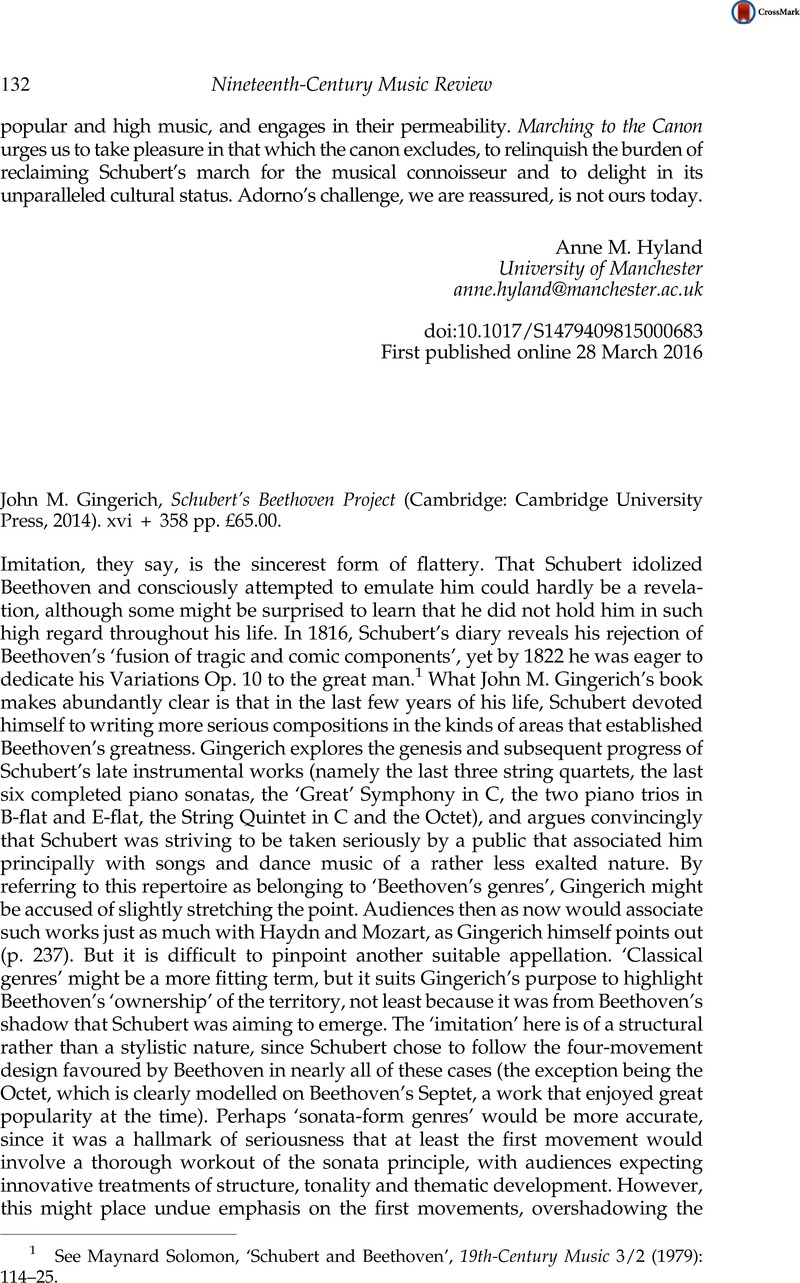No CrossRef data available.
Article contents
John M. Gingerich, Schubert’s Beethoven Project (Cambridge: Cambridge University Press, 2014). xvi + 358 pp. £65.00.
Review products
Published online by Cambridge University Press: 28 March 2016
Abstract

- Type
- Book Reviews
- Information
- Copyright
- © Cambridge University Press 2016
References
1 See Solomon, Maynard, ‘Schubert and Beethoven’, 19th-Century Music 3/2 (1979): 114–125 CrossRefGoogle Scholar.
2 Reference might usefully have been made to the separate chapters on the A minor quartet by Rast, Nicholas and Sobaskie, James in Schubert the Progressive, ed. Brian Newbould (Aldershot: Ashgate, 2002), 53–80 Google Scholar and 81–8 respectively. This volume also contains excellent essays on two of Schubert’s late piano sonatas (D. 894 and D. 960) by Robert Hatten (pp. 151–68) and Roy Howat (pp. 117–38).
3 For more on the origins of ombra and its use as a topic in instrumental music, see McClelland, Clive Ombra: Supernatural Music in the Eighteenth Century (Lanham: Lexington Books 2012)Google Scholar.
4 Beethoven showed little inclination for supernatural references in his music. Two notable exceptions are the overture to Christus am Oelberge and the slow movement of the Piano Trio in D, Op. 70 No 1, which subsequently led to the work’s nickname ‘Ghost’.
5 See Gingerich, John M., Schubert’s Beethoven Project: the Chamber Music, 1824–1828 (PhD diss., Yale University, 1996)Google Scholar; Gingerich, John M., ‘Remembrance and Consciousness in Schubert’s C-Major String Quintet, D. 956’, The Musical Quarterly 84/4 (2000): 619–634 CrossRefGoogle Scholar; Gingerich, John M., ‘Unfinished considerations: Schubert’s “Unfinished” Symphony in the context of his Beethoven Project’, 19th-Century Music 31/2 (2007): 99–112 CrossRefGoogle Scholar; Gingerich, John M., ‘Ignaz Schuppanzigh and Beethoven’s Late Quartets’, The Musical Quarterly 93/3–4 (Fall/Winter 2010): 450–513 CrossRefGoogle Scholar.



